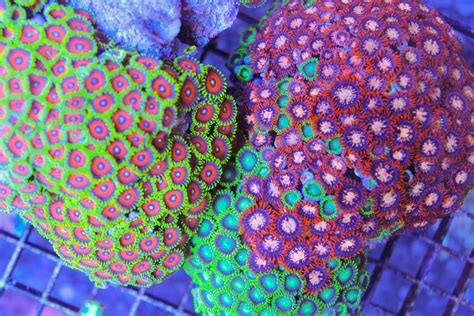Introduction
Aquarium corals, with their vibrant colors and intricate shapes, add a captivating dimension to any marine aquarium. However, selecting and caring for corals requires a comprehensive understanding of their unique requirements. This guide will delve into the intricacies of aquarium coral selection and care, empowering you to create a thriving underwater ecosystem.

Aquarium Coral Selection
1. Compatibility:
- Choose corals that are compatible with your existing tank inhabitants and environmental conditions.
- Research potential interactions and consider the aggressiveness of different species.
2. Lighting Requirements:
- Determine the light intensity and spectrum needed for each coral species.
- Use appropriate lighting fixtures and placement to provide optimal conditions.
3. Water Quality:
- Ensure impeccable water quality with stable parameters (pH, salinity, temperature).
- Regular water changes and filtration are essential for coral health.
4. Flow:
- Provide varying water flow to mimic natural reef conditions.
- Adjust the flow strength and direction to suit different coral species.
Aquarium Coral Care
1. Feeding:
- Most corals feed through photosynthesis or filter feeding.
- Provide additional food sources such as zooplankton or coral food supplements.
2. Maintenance:
- Remove algae and debris regularly to prevent overgrowth and disease.
- Prune corals to control size and encourage growth.
3. Disease Prevention:
- Quarantine new corals to prevent disease transmission.
- Maintain clean water conditions and monitor corals for signs of stress or illness.
Hard Corals vs. Soft Corals
| Feature | Hard Corals | Soft Corals |
|---|---|---|
| Skeleton | Calcium carbonate | Protein matrix |
| Shape | Rigid, branching or encrusting | Flexible, swaying or mushroom-shaped |
| Growth Rate | Slow | Fast |
| Light Requirements | Moderate to high | Low |
| Water Movement | Moderate to high | Low |
Tips and Tricks
- Use a calcium reactor or supplements to maintain optimal calcium levels for hard corals.
- Employ a protein skimmer to remove organic waste and improve water quality.
- Incorporate coral-specific vitamins and trace elements into your care regimen.
- Regularly monitor pH and alkalinity levels to ensure stability.
- Provide adequate hiding places for corals to reduce stress.
Why Aquarium Corals Matter
- Biodiversity: Corals support a diverse ecosystem, providing habitat for numerous marine life.
- Nutrient Regulation: Corals absorb and recycle nutrients, improving water quality.
- Oxygen Production: Photosynthetic corals release oxygen into the water, benefiting other inhabitants.
- Aesthetic Beauty: The vibrant colors and unique shapes of corals create a captivating underwater display.
Case Detail: Coral Bleaching
Coral bleaching occurs when corals expel their symbiotic algae due to stress. According to the National Oceanic and Atmospheric Administration (NOAA), warming oceans and pollution are major causes of coral bleaching.
FAQs
1. What are common signs of coral stress?
* Faded or pale color
* Mucus production
* Extended polyps
2. How often should I change coral water?
* 10-20% weekly or 20-30% bi-weekly
3. Can I keep different species of corals together?
* Yes, with careful consideration of compatibility and space
4. What is the ideal water temperature for most corals?
* 72-78 degrees Fahrenheit (22-26 degrees Celsius)
5. How can I prevent algae overgrowth on corals?
* Control nutrient levels, maintain good water flow, and manually remove algae
6. What are the benefits of adding invertebrates to a coral aquarium?
* Enhanced biodiversity, improved water quality, and added aesthetic appeal
Market Insights
The global aquarium coral market is projected to reach $1.5 billion by 2025, driven by increasing demand for marine aquariums and the expansion of the pet industry. Factors such as advancements in artificial lighting and filtration systems are further推动ing market growth.
Conclusion
Aquarium coral selection and care require meticulous attention to detail and a deep understanding of their unique needs. By considering compatibility, water quality, flow, and other essential factors, you can create a thriving coral ecosystem that brings beauty and ecological balance to your marine aquarium.





















